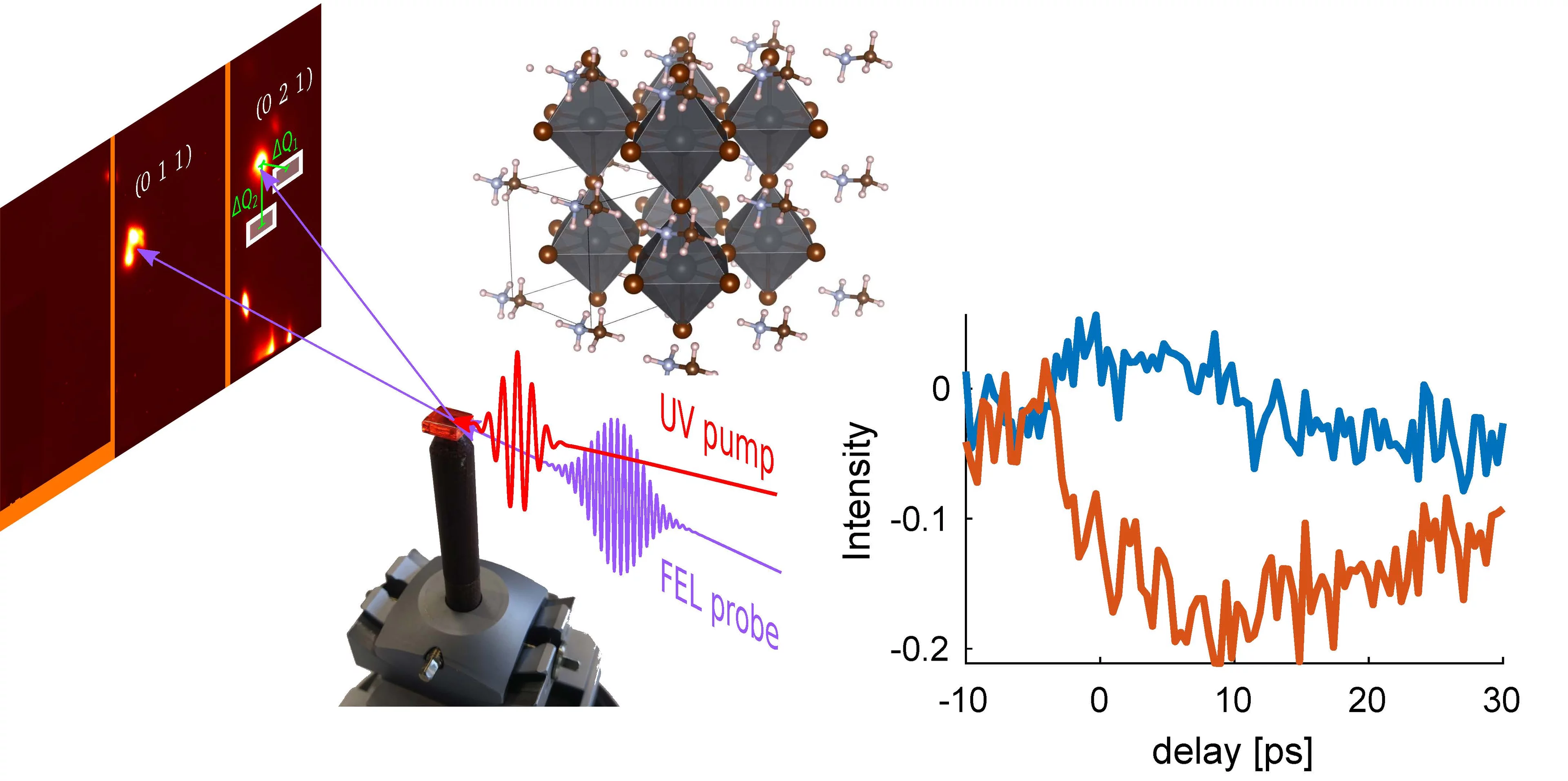Organic–inorganic ‘hybrid’ perovskites have recently gained attention as a low-cost alternative to silicon solar cells. However, many properties of these materials are still poorly understood. In particular, how imperfections in the crystals, which can be both static or dynamic, affect energy transport remains unclear. In nearly perfect solar cells such as silicon, these imperfections act like potholes in a road, ‘trapping’ electrons on their journey through the circuit, and thus lowering the efficiency of the cell. Perovskite solar cells, on the other hand, seem to be much more resilient, even though the defect densities are considerably higher than in pure silicon. Understanding how these materials cope with defects so well could potentially lead to lower-cost preparations for solar cells, without compromising their performance.
To get answers to some of these questions, a team of scientists from the SLAC National Accelerator Laboratory and TU Munich measured in late September 2019 the ultrafast diffuse x-ray scattering of a hybrid perovskite crystal at the Bernina instrument of SwissFEL. By studying the response to impulsive UV light excitation, they could see the disorder hidden inside what looks like a perfect crystal lattice, revealing regions where the lattice is deformed (see figure). The changes in the diffuse-scattering intensity after photoexcitation were collected over a wide range of angles, such that different phonon waves in the crystal could be discerned. The differences in dynamics between different waves should in turn help to better understand the role of the perovskite crystal lattice in ‘protecting’ charges created by light.
Contact
Dr. Henrik Till Lemke
Group Leader
Paul Scherrer Institute
Forschungsstrasse 111
5232 Villigen PSI
Switzerland


